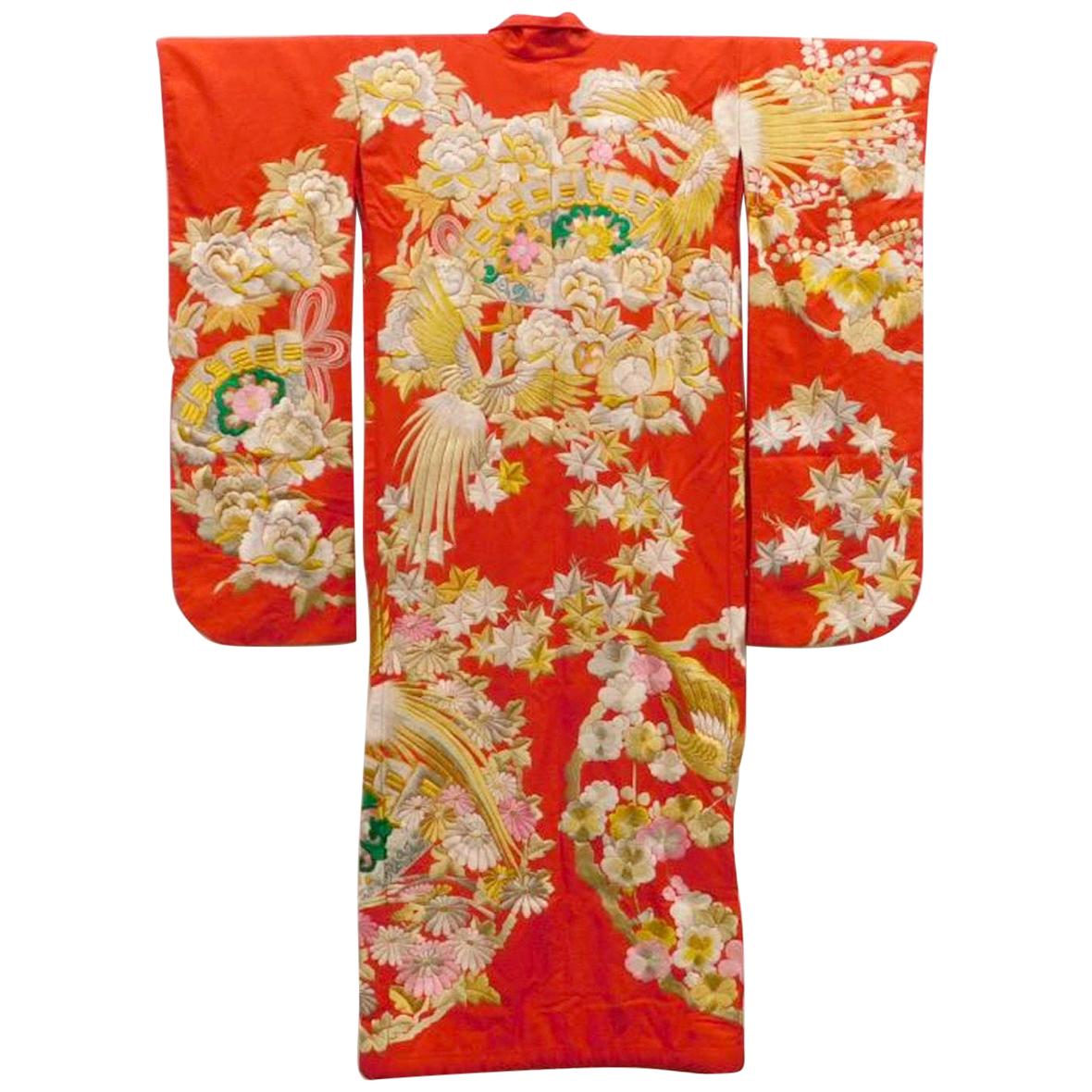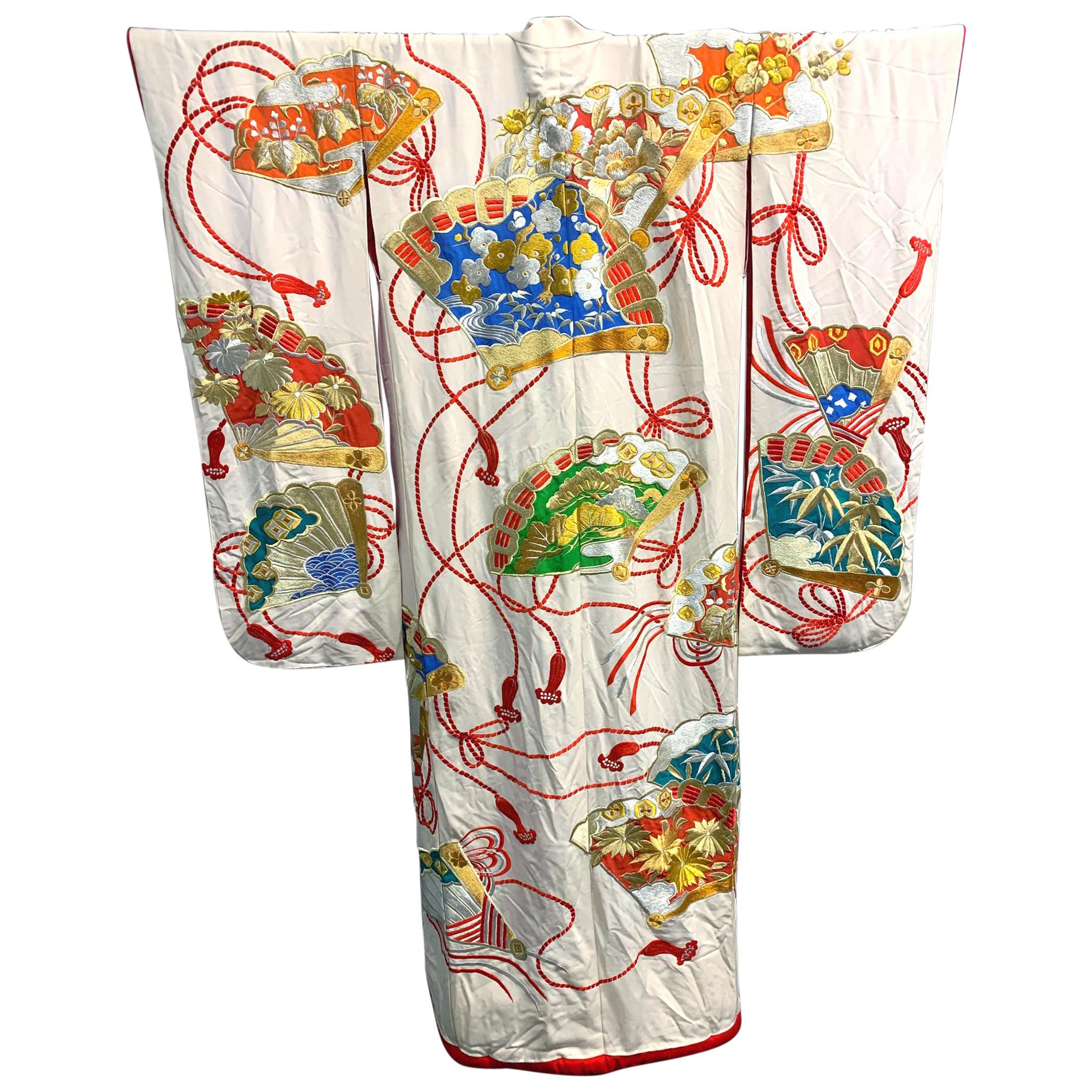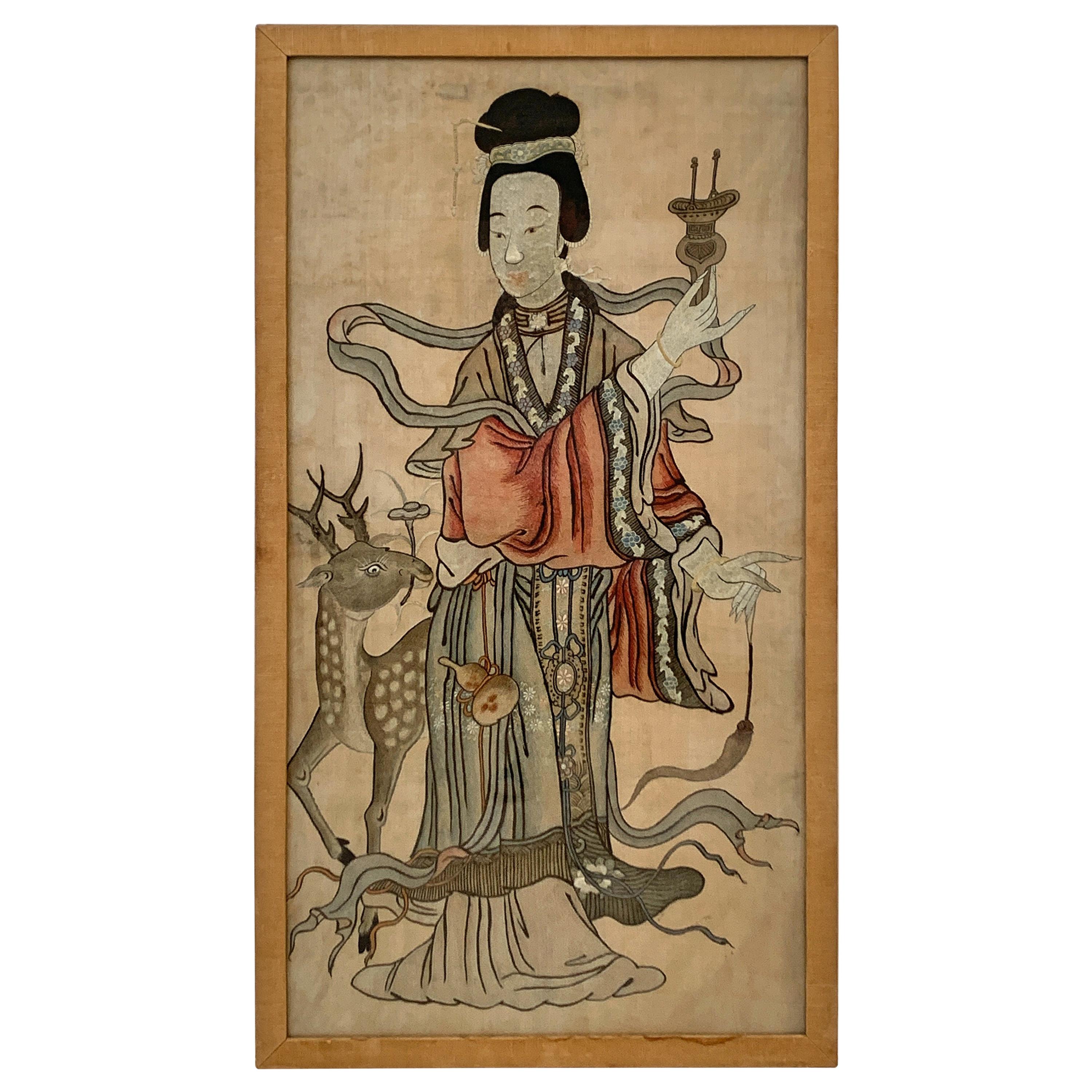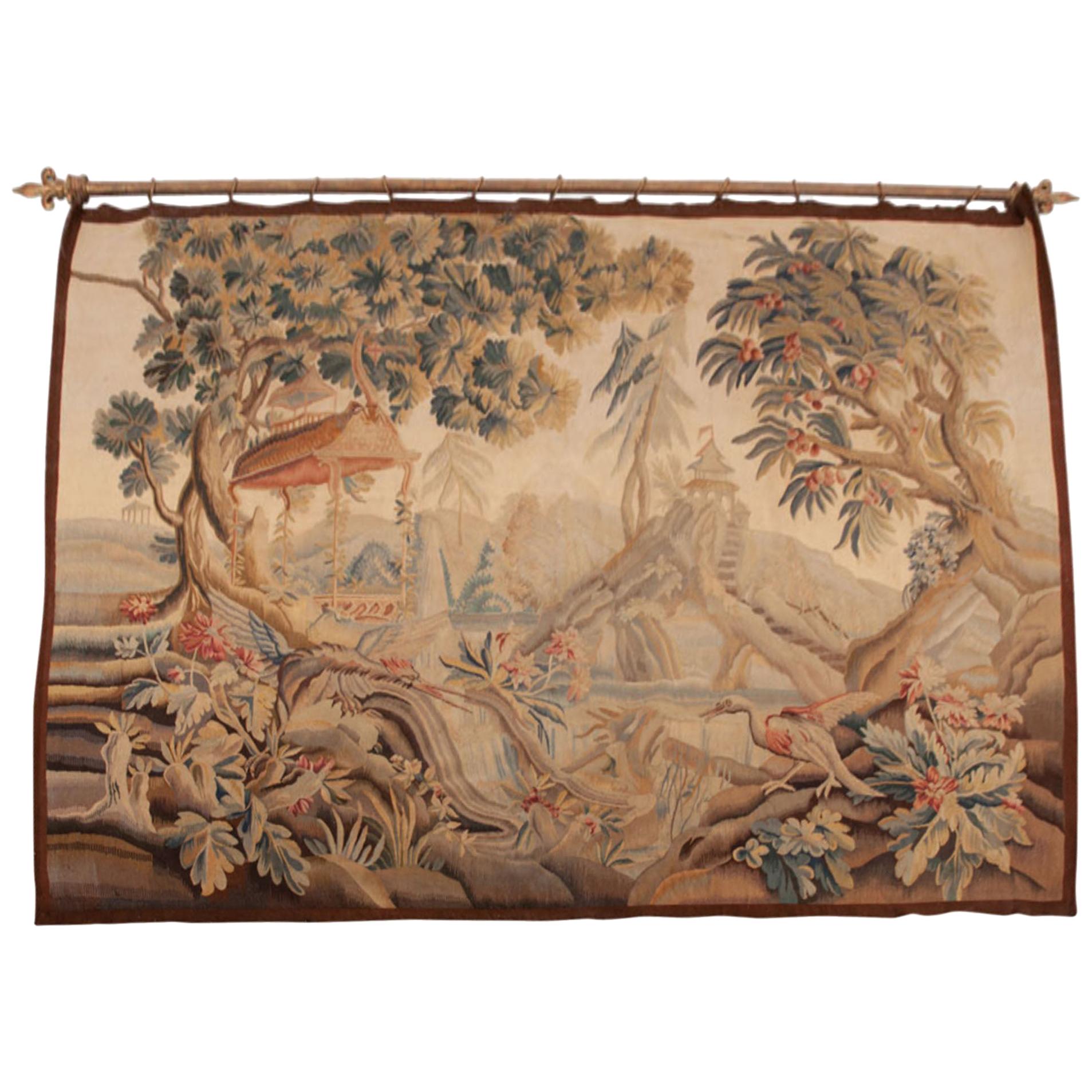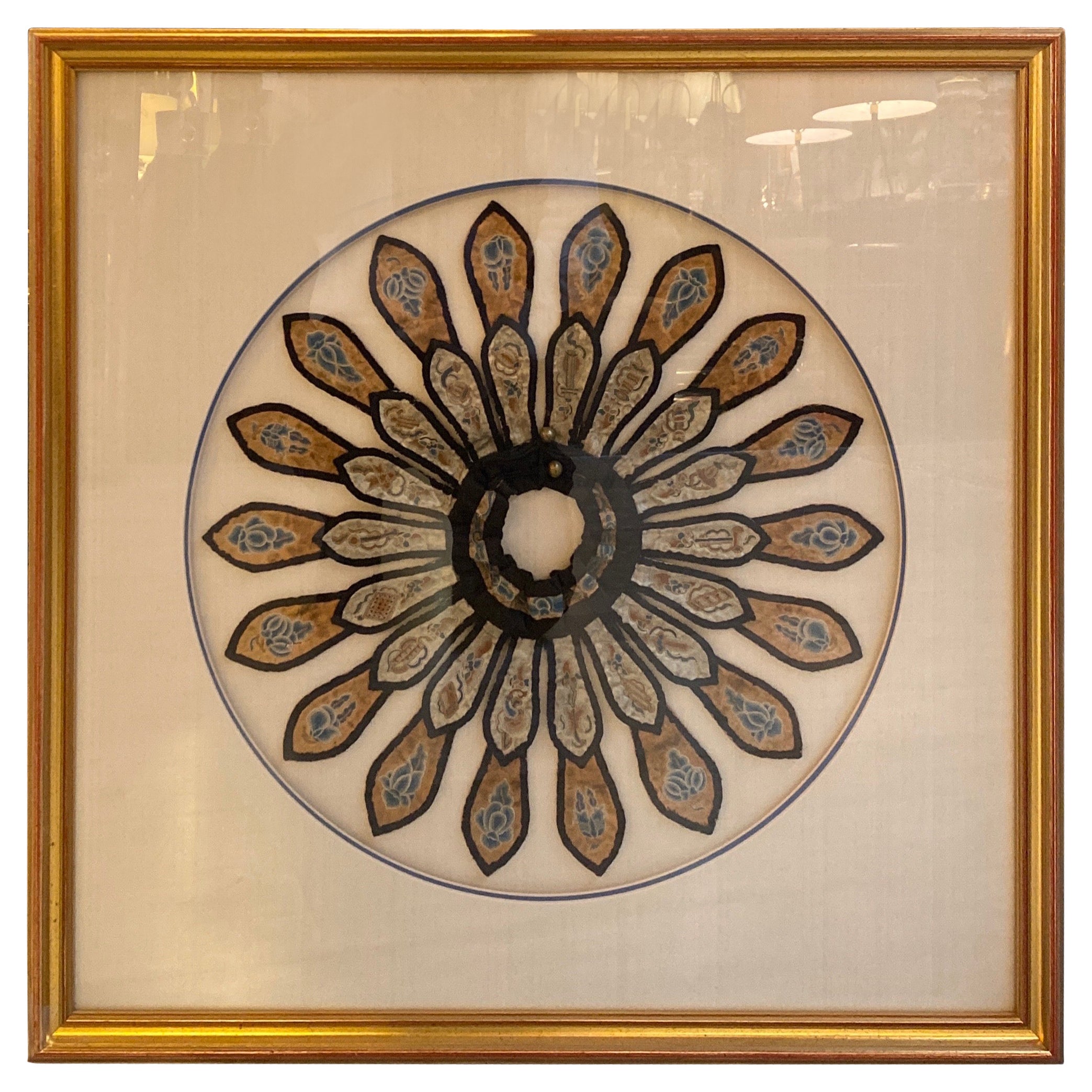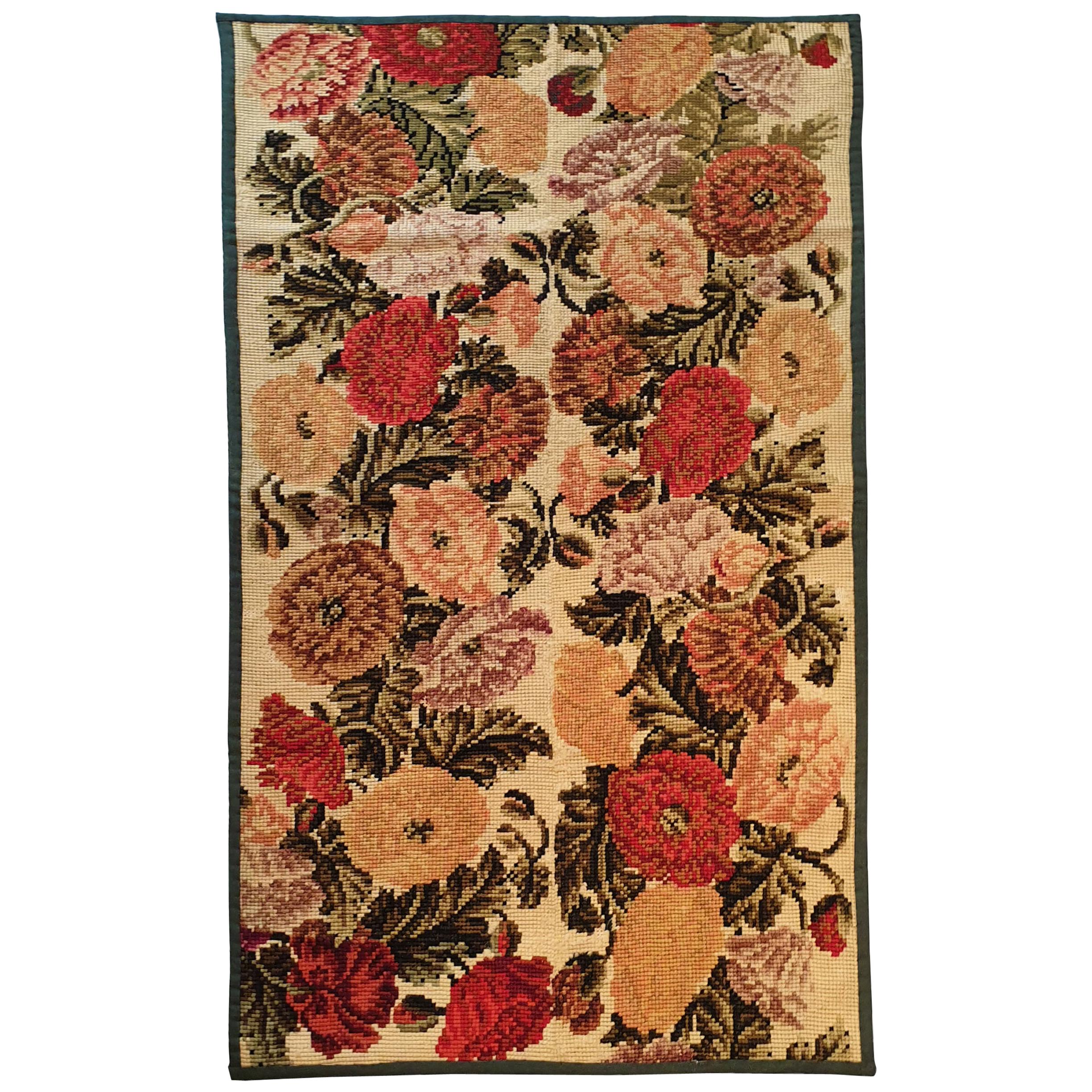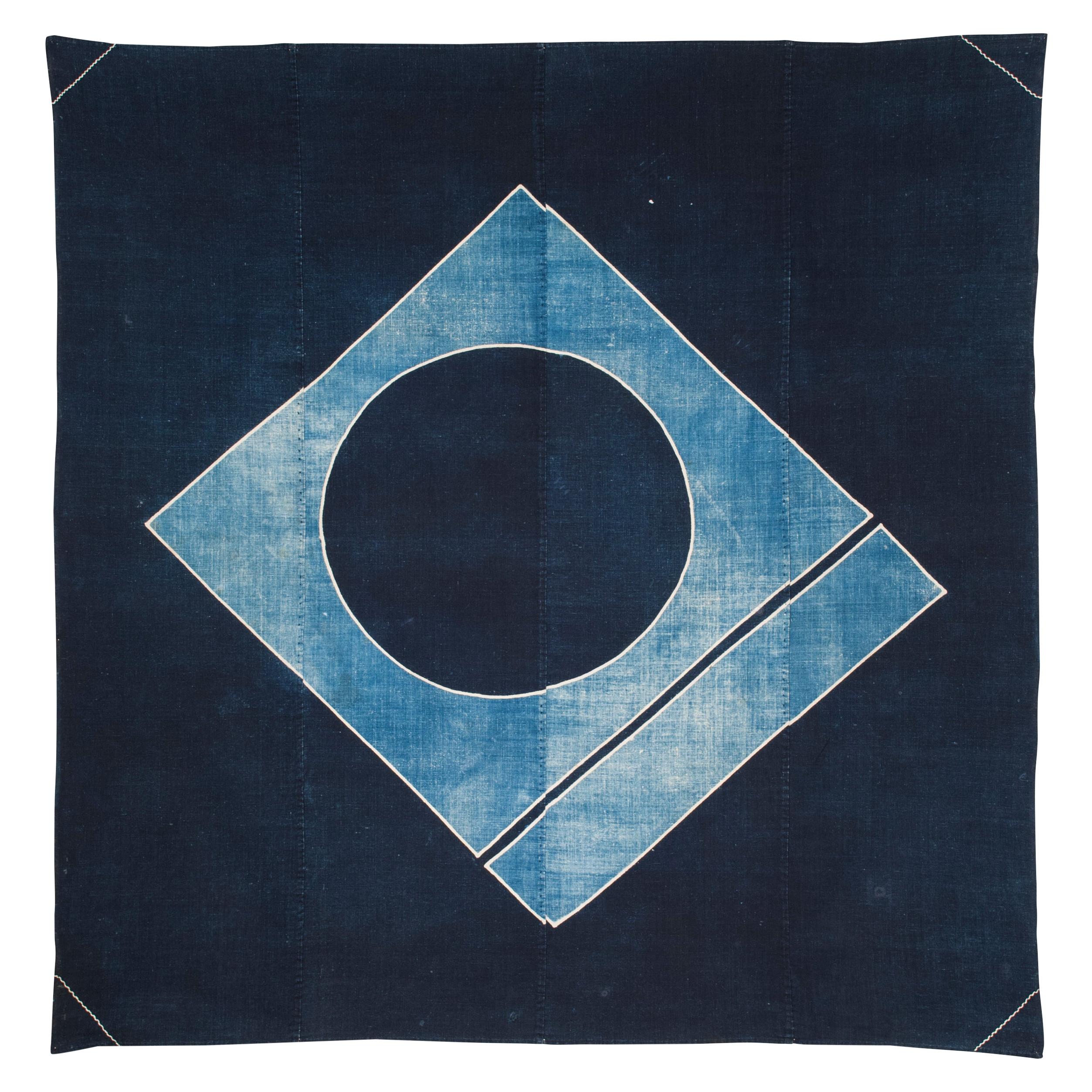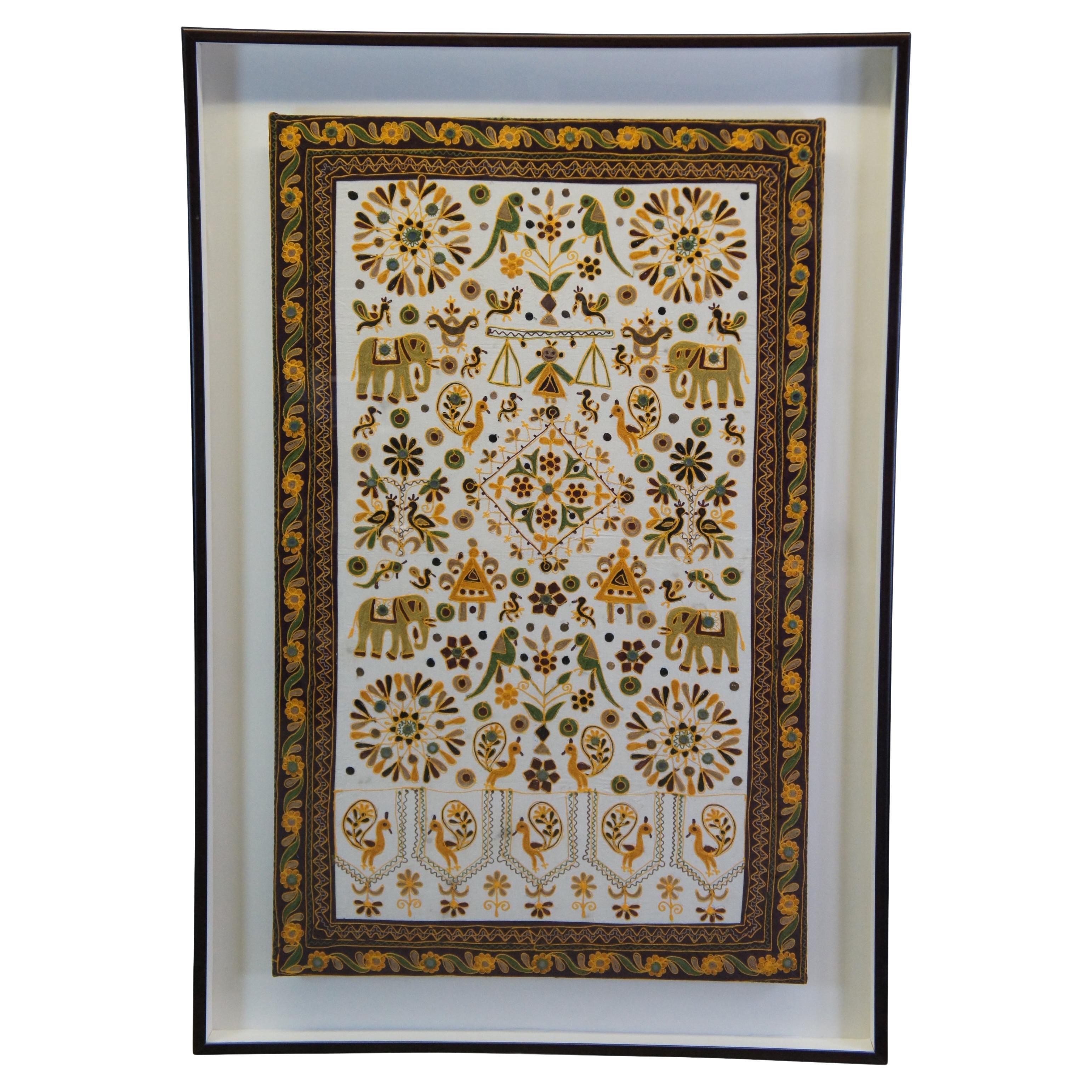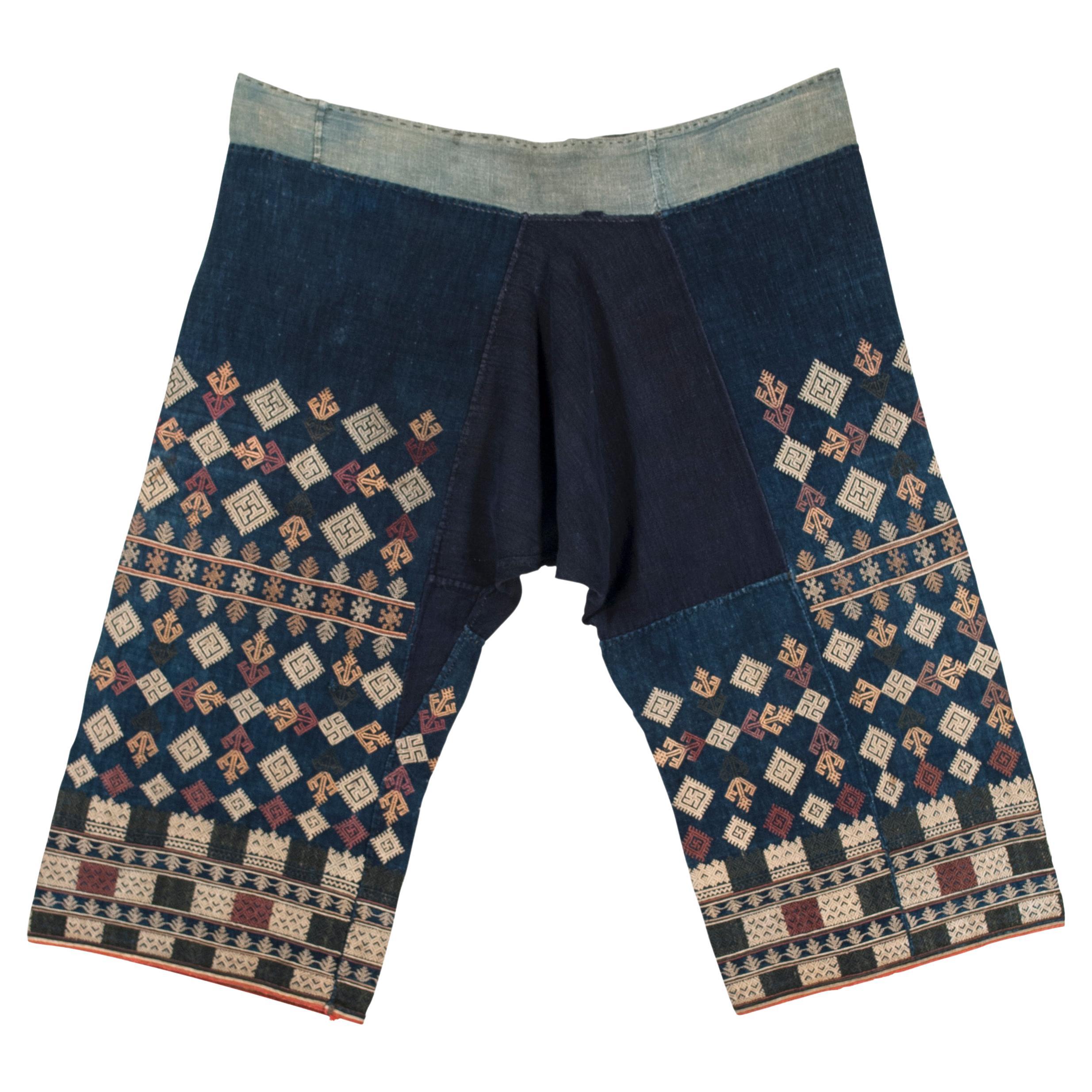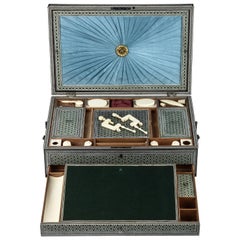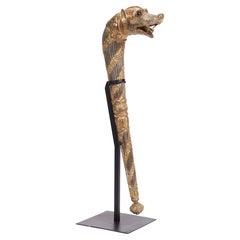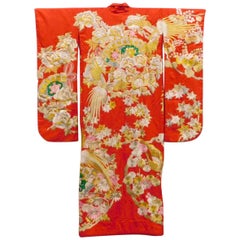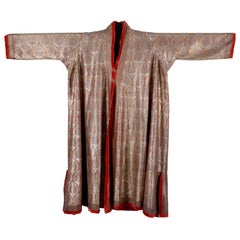
Indian Kashmir Silver-Embroidered Wool Choga, Ceremonial Men's Coat 19th Century
View Similar Items
Want more images or videos?
Request additional images or videos from the seller
1 of 2
Indian Kashmir Silver-Embroidered Wool Choga, Ceremonial Men's Coat 19th Century
About the Item
- Dimensions:Height: 74.81 in (190 cm)Width: 64.18 in (163 cm)Depth: 1.97 in (5 cm)
- Materials and Techniques:Wool,Embroidered
- Place of Origin:
- Period:
- Date of Manufacture:1850-1880
- Condition:Wear consistent with age and use.
- Seller Location:Amsterdam, NL
- Reference Number:1stDibs: LU5458220872402
About the Seller
5.0
Vetted Seller
These experienced sellers undergo a comprehensive evaluation by our team of in-house experts.
Established in 1985
1stDibs seller since 2020
19 sales on 1stDibs
Typical response time: 3 hours
More From This SellerView All
- Extremely Fine Chinese Silk Embroidered Bed-Cover for the Dutch MarketLocated in Amsterdam, NLA Chinese red silk, embroidered bed cover Guangdong or Macao, mid-18th century The red silk cover, one one side elaborately embroided in co...Category
Antique Mid-18th Century Chinese Chinese Export Tapestries
MaterialsGold, Silver
- Rare Complete Early 19th Century Indian Sadeli Work and Writing BoxLocated in Amsterdam, NLA rare complete Indian Sadeli inlaid work and writing box British India, Bombay (present-day Mumbai), early 19th century Micromosaic inlaid wood, with fitted bone interior and tools, and silver fittings. H. 12.6 x W. 43.2 x D. 28.5 cm Note: Workboxes, portable writing desks...Category
Antique Early 19th Century Indian More Asian Art, Objects and Furniture
MaterialsBone, Wood
- An Indian part-gilt silver-clad ceremonial sceptre or mace with a tiger’s headLocated in Amsterdam, NLNorthern India or Deccan, late 19th century L. approx. 82 cm (excl. stand) Provenance: Private collection, United Kingdom This remarkable gilt-silver soonta (ceremonial sceptre) also known as choba (ceremonial mace) with a tiger's head stands out as an unparalleled example. It has a wooden base, clad with thick sheet part-gilt silver and has fine details such as teeth and a curling tongue. Especially with the inlaid glass eyes, in combination with the grand sculptural design, it would have been integral to an Indian maharaja’s attire, known as lawajama in North India and biruthus in South India, as referenced by Jackson & Jaffer. They would symbolise authority, power, and sometimes an attribute of various deities, particularly those associated with strength or combat. For instance, the Hindu god Hanuman, known for his immense strength, is often depicted holding a mace (*chob* or gada in Sanskrit). Similarly, the god Vishnu and his avatar Krishna are also frequently depicted with a mace among their other attributes. Courtiers would raise these sceptres wrapped in rich brocades, with the head visible, during processions, signalling their association with the monarch. Alongside fly-whisks and standards, they were indispensable in ceremonial parades, underscoring the ruler's prestige. Terlinden notes that a soonta berdar was tasked with carrying the sceptre. These individuals, proficient in courtly manners, played key roles during audiences, from managing entrances to introducing guests. Their esteemed position often earned them generous rewards, including land grants. See for a depiction of sceptres in use the top right of a painting in the collection of the V&A, titled Processional scene with Amar Singh, ruler of Thanjavur (Tanjore), and Sarabhoji, from circa 1797. For a very comparable piece, but with an elephant’s head, see the collection of the Indian Museum, Kolkata. For other less similar examples, see the V&A Museum London. Sources: A. Jackson & A. Jaffer, Maharaja: The Splendour of India’s Royal Courts, London, V&A Publishing, 1999 Christiane Terlinden Serra, Mughal Silver...Category
Antique Late 19th Century Indian Metalwork
MaterialsSilver
- Fine Indian Silver Filigree Casket with Hinged Cover, 18th CenturyLocated in Amsterdam, NLA pair of very fine silver filigree rosewater sprinklers Possibly India, Karimnagar, early 18th century Measures: Height 31.6 cm and 31.7 cm,...Category
Antique 18th Century Indian Metalwork
MaterialsSilver
- Delft Polychrome Enameled Earthenware Parrot, 18th-19th CenturyLocated in Amsterdam, NLA fabulous polychrome enameled earthenware parrot Delft or France, 18th or 19th century Suspended from a ring, with modern powder-coated stand. Measure: L parrot 26 cm.Category
Antique 19th Century Dutch Ceramics
MaterialsEarthenware
- Dutch Colonial Silver Dish with the Von Pfeffel Coat-of-arms, 17th CenturyLocated in Amsterdam, NLAn unusual Indonesian lobbed silver dish Jakarta (Batavia) or Coromandel coast, third quarter 17th century, apparently unmarked The eight lobbed dish exuberantly decorated with floral motifs, with the middle section replaced, consisting of indistinctly marked German silver from the early 19th century, bearing the coat-of-arms of the Von Pfeffel family. Diam. 30.5 cm Weight 461 grams Note: Lobbed silver dishes with exuberant floral decorations were characteristic of the decorative arts in the Netherlands in the first half of the 17th century. This style of floral decoration was adopted by silversmiths as well as by furniture makers working on the Coromandel Coast and in Batavia, often by workers who had fled the Coromandel Coast because of war and famine. In Batavia this style was known as “Custwerck” (work from the Bengal coast). These lobbed dishes are seldom marked. Only after 1667 the use of the town mark became obligatory in Batavia but only for silver made in Batavia not for silver imported in Batavia from other VOC settlements. The engraved coat of arms in the centre is a replacement of the original centre. The coat of arms can be identified as those of Christian Hubert von Pfeffel (1765- 1834). As a diplomat, statesman, ambassador of Bavaria in London and Saxony and councillor to the King of Bavaria, he was made “Freiherr” in 1828 and since then used this coat of arms. His son Karl Maximilian Friederich Hubert Freiherr von Pfeffel (1811-1890) in 1836 married Karoline Adelheid Pauline von Rottenburg (1805-1872), the natural daughter of Prins Paul von Württemberg (1785-1852) and his mistress Margrethe Porth. Paul was the jounger brother of the King Wilhelm I of Württemberg (1781-1864). The heraldic motto of the von Pfeffels Vur Schande habe den Huot means as much as “Beware of Shame”. Christian Hubert Theodoor Marie Karl von Pfeffel Karl Maximilian’s grandson was the last male in the von Pfeffel line. His daughter, Marie Louise (Paris in 1882 - Cornwall 1944), born and grown-up in France, changed her name in de Pfeffel. She was the great grandmother of Boris Alexander de Pfeffel Johnson, the present British Secretary of State. None of the members of the von Pfeffel family had any direct links with the Dutch East Indies but indirectly by way of the Royal House of Württemberg they did. Sophia Frederika Mathilda von Württemberg (1818-1877), daughter of Wilhelm I King of Württemberg, in 1839 married Willem III...Category
Antique Late 17th Century Indonesian Dutch Colonial Sterling Silver
MaterialsSilver
You May Also LikeView All
- Exceptional Embroidered Japanese Ceremonial KimonoLocated in Atlanta, GAA visually striking antique Uchikake Wedding Kimono/Robe for ceremonial occasion, circa end of Meiji to Taisho period 1910s-1930s. This bridal outer garment is of a bright red color ...Category
20th Century Japanese Japonisme Textiles
MaterialsBrocade, Silk
- Exceptional Embroidered Vintage Japanese Ceremonial KimonoLocated in Atlanta, GAA visually striking vintage Uchikake Wedding Kimono/Robe for ceremonial occasion, circa 1930s-1950s in the Oriental Art Deco style. The bridal garment...Category
20th Century Japanese Japonisme Textiles
MaterialsCotton, Silk
- Chinese Silk Embroidered Panel of a Female Immortal, Qing Dynasty, 19th CenturyLocated in Austin, TXA large framed and glazed Chinese Qing dynasty silk embroidered tapestry panel of a female immortal, most likely Magu, late 19th century, China. The large Chinese silk panel beautifully embroidered with an image of the Taoist female immortal Magu. Magu wears luxurious, long, flowing robes, with scarf billowing around her and a gourd drinking vessel hanging tied around her waist. She holds aloft in one hand an archaic ritual wine vessel...Category
Antique Late 19th Century Chinese Qing Textiles
MaterialsSilk, Glass
- Extra-Large Antique Indian Kashmir Textile, ca. 1900Located in Ferrara, ITThis is an extra-large antique Indian Kashmir textile woven during the end of the 19th-century circle 1900 and measures 310 x 162 cm in size. This pie...Category
Antique 19th Century Indian Other Textiles
MaterialsCotton
- French 19th Century Tapisserie de VerdureLocated in Baton Rouge, LAThis 19th century French Tapisserie de Verdure, circa 1850s, is exquisite. It is wool and cotton, and hangs on a metal tapestry rod with rings. The s...Category
Antique 19th Century French Other Tapestries
MaterialsTapestry
- Aubusson French Antique Tapestry, 19th Century - N° 900Located in Paris, FR*We carefully package your order. Our delivery team are a professional group who use the proper upholstery methods to avoid disappointment. Your purchases are placed in paper balls a...Category
Antique 1880s French Aubusson Tapestries
MaterialsWool
Recently Viewed
View AllMore Ways To Browse
Kashmir Coat
Indian Kashmir Shawls
Antique Embroidered Shawl
Indian Kashmir Silver
Large Antique Indian Mirror
Kashmir Silver
19th Century Coat Men
Antique Textile Stumpwork
Japanese Farmer Jacket
Jim Thompson Silk Elephants
Kaaba Curtain
Pictorial Embroidered Panel Gold Thread
Pua Kumbu
Meisen Kimono
Vintage Hindu Tapestry
Tucuman Tapestry
Japanese Boro Cloth
Vintage Japanese Tomesode
